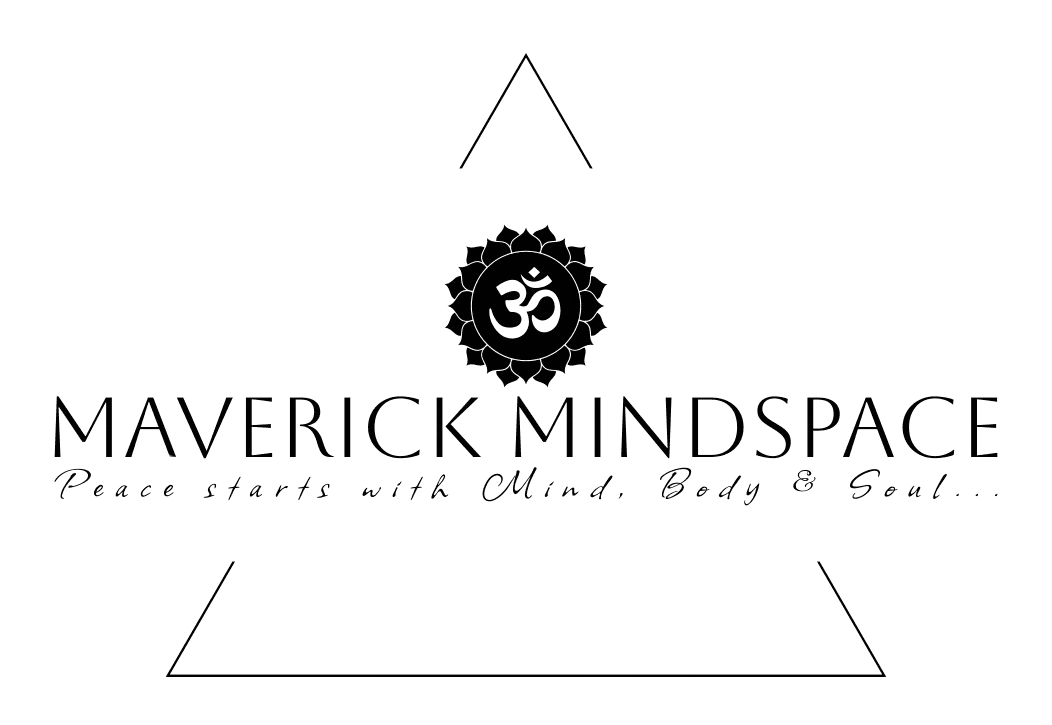Breathe Into Stillness, Breathe Into Life: Breathing Exercises to Calm the Mind
In the words of yoga:
“When the breath wanders, the mind is also unsteady. But when the breath is calmed, the mind too will be still.” — Hatha Yoga Pradipika
Have you ever experienced your thoughts as a busy, loud market—too much to calm down and keep them focused on one point?
In today’s fast-paced modern generation, we are so unaware of the power of breathing that our breath often becomes shallow, hurried, and ignored—a quiet reflection of our worries and stresses. But if we look at our ancient yogic textbooks, we will find out that the breath is the door to tranquility.
From the Vedic era to the yogis of today, spiritual teachers have said that deliberate and controlled conscious breathing may change our inner world. It’s about flourishing in quietness, not just surviving.
Harnessing the power of our breath helps us to calm the inner storms and reconnect to the tranquil strength of our soul.
This post will look at the top 10 breathing exercises to calm the mind—simple but powerful tools that may change our emotional terrain, increase mental clarity, boost our mental health and anxiety, and guide us back to our core.
🧘♂️ Why Breathing Exercises Matter for Mental Health
“The mind is the king of the senses, but the breath is the king of the mind.” — B.K.S. Iyengar
- Regulates Stress Hormone: When we do conscious breathing, it regulates our parasympathetic nervous system, which helps in lowering cortisol (the stress hormone) in our body.
- Mind-Body Connection: When we do breathing mindfully, it helps us to anchor our wandering mind into peace and calmness, which helps in finding mindfulness and emotional stability.
- Spiritual Awakening: From our Vedic and ancient knowledge, we know that deep breathwork is the foundation of many spiritual practices, which lead us to heightened awareness and inner peace.
Connection Between Breathing (Pranayama) and Bhagavad Gita
Gita doesn’t talk about “Breathing Exercises“ exactly like in modern yoga.
It speaks about breath control (pranayama) as part of spiritual self-discipline, which helps us improve our Mental Health.
Here’s a powerful Gita shloka on breathing:
Bhagavad Gita — Chapter 4, Verse 29
अपाने जुह्वति प्राणं प्राणेऽपनं तथापरे |
प्राणापानगती रुद्ध्वा प्राणायामपरायणाः || 29 ||
Transliteration:
Apāne juhvati prāṇam prāṇe’pānam tathāpare |
Prāṇāpāna-gatī ruddhvā prāṇāyāma-parāyaṇāḥ ||
Translation:
Some offer the outgoing breath into the incoming breath and the incoming breath into the outgoing breath, restraining the flow of both, practicing pranayama (breath control) as an act of inner sacrifice.
Essence:
In the above shloka Gita beautifully highlights breath awareness as a sacred spiritual practice.
Controlling the inhale and exhale — merging the flow — leads to self-mastery and mental stillness, which helps us to have control over our mind and anxiety.
Breath becomes an offering, a spiritual act of union with the divine.
🌿 Simple Human-Tone Meaning:
When we consciously breathe, when we are mindful of our inhaling and exhaling, we are practicing a divine offering of our life force. This self-discipline can bring peace, focus, inner liberation, and improved mental health.
🌟 Top 10 Breathing Exercises to Calm the Mind
1. Diaphragmatic Breathing (Belly Breathing)
What it does: Activating the vagus nerve, it promotes relaxation.
How: Breathe deeply via your nose, allowing your stomach to grow. Breathe out of your mouth slowly.
Best for: Quick stress reduction.
2. Box Breathing (Square Breathing)
What it does: Increases concentration and harmonizes the neurological system.
How: Inhale for four seconds, hold, exhale, then hold for four seconds. Could you do it again?
Best for: Pre-meeting calmness, anxiety.
3. Alternate Nostril Breathing (Nadi Shodhana)
What it does: Balances left and right brain hemispheres.
How: Close the right nostril with your thumb and breathe in from the left. Exhale and change sides. Could you do it again?
Best for: Mental clarity and emotional equilibrium.
4. 4-7-8 Breathing
What it does: Slows the heart rate and lessens anxiety.
How: Breathe in for four counts, hold for seven, then breathe out for eight seconds.
Best for: Falling asleep faster.
5. Resonance Breathing (Coherent Breathing)
What it does: Increases heart-brain coherence to the maximum.
How: Breathe at a pace of five breaths per minute—inhale for 5.5 seconds, exhale for 5.5 seconds.
Best for: Healing from trauma and sadness.
6. Deep Yogic Breathing (Dirga Pranayama)
What it does: Encourages complete lung capacity usage.
How: Breathe into the belly, then into the ribs and upper chest in one deep, flowing motion.
Best for: Detoxification and deep relaxation.
7. Kapalabhati (Skull Shining Breath)
What it does: Energizes the body and psyche.
How: Quick, powerful nasal exhales followed by quiet inhalations.
Best for: Clearing brain fog, morning energy boost.
8. Sitali Breath (Cooling Breath)
What it does: Lowers body temperature and soothes rage.
How: Curl your tongue and breathe in through it like a straw. Breathe out from the nose.
Best for: Hot flushes, stress.
9. Humming Bee Breath (Bhramari)
What it does: Produces vibrations that calm the neurological system.
How: Breathe deeply, then exhale with a humming noise.
Best for: Emotional overload, sleeplessness.
10. Mindful Breathing Meditation
What it does: It increases alertness and mindfulness.
How: Concentrate only on your natural breath, feeling the sensations of every inhale and exhale.
Best for: Daily mental upkeep.
🌿 Starting Your Daily Breathing Routine
Morning: Five to ten minutes of diaphragmatic breathing or Kapalabhati.
Afternoon: 5 minutes of alternate nostril breathing or box breathing.
Evening: 10 minutes of mindful breathing meditation or 4-7-8 breathing.
Begin modestly. Two conscious breaths may change your energy
🌬️ Scientific Benefits of Breathing Consciously
“Feelings come and go like clouds in a windy sky. Conscious breathing is my anchor.” — Thich Nhat Hanh
In a day, we almost breathe 20,000 times unknowingly. Breathing has a secret healing effect when we do it consciously.
Breathing deliberately sends healing messages to our mind, body, and spirit and fixes our mental health and removes anxiety from our brain.
1. 🧠 Reduces Stress and Anxiety (Harvard Medical School)
Scientific Proof: Scientific studies from Harvard Medical School indicate that slow, deep breathing helps activate our parasympathetic nervous system (the body’s “relax and digest” mode). Thus, it helps in lowering cortisol, the stress hormone in our body.
Our mind will stay in control when we regulate our breath. Dr. Herbert Benson, Harvard Mind-Body Institute
Real Impact: According to a 2020 study, only five minutes of mindful breathing each day may reduce anxiety levels by up to 44%.
2. ❤️ Improves Heart Health (American Heart Association)
Scientific Evidence: Research shows that when we inhale like 5–6 breaths per minute, it will reduce blood pressure and enhance heart rate variability in our body, which are essential for cardiovascular health.
Real Impact: People who are under a lot of stress can also heal themselves by mindful breathing. It is connected to a 20% decreased chance of getting heart disease.
3. 🛌 Boosts Sleep Quality (National Sleep Foundation)
Scientific Evidence: In the above slide, the 4-7-8 Mindful breathing soothes the nervous system and helps the body get into deep sleep quicker.
Real Impact: In clinical studies, people who followed this method before sleep fell asleep 50% quicker and saw a 30% increase in sleep quality.
4. 💪 Strengthens Immune System (University of Nijmegen, Netherlands)
Scientific Evidence: Controlled breathing, the autonomic nervous system, and boosting anti-inflammatory reactions in our body.
Real Impact: This improves immunity, particularly against seasonal infections and chronic conditions like SAD conditions also.
5. 😌 Emotional Regulation (Yale School of Medicine)
Scientific Evidence: When we start to do conscious breathing regularly, it influences the amygdala (the brain’s fear region) and prefrontal cortex (logical thinking area), in our body.
Conscious breathing helps us control emotional responses more effectively.
Real Impact: Over time, breathwork participants reported more emotional resilience and reduced reaction to mental health issues.
🌬️ Breathing Through the Storm: My Journey from Darkness to Light
There was a time in my life when I reached rock bottom after a string of personal disappointments and setbacks. I was battling to find a consistent career in my life, but the feeling of grief was so intense that it destroyed my willpower to fight against my darkness. I was shadowed by anxiety. Depression turned my days into a never-ending grey. I felt cut off from life, from people, and myself. I was emotionally and spiritually unavailable
On one of those tear-stained, restless evenings, I came upon something so basic yet so strong: conscious breathing.
Initially, it seemed so difficult. How could anything change from breathing, which I do every second? I was so clueless about it. I started with deliberate and conscious calm, inhaling and exhaling just five minutes a day regularly. I recall my first session vividly: sitting alone in my little rented room, feeling stupid… and then experiencing a subtle, almost undetectable change. Like the smallest crack of light piercing a shut window. I could feel the darkness in my mind gradually fade away.
Day after day, my breathing became my anchor in my life.
So this became a part of my life. When I start to feel grief or anxiety, I just shut my eyes and sit for a few minutes of conscious breathing. Whenever loneliness ate at me, I imagined fresh air bringing optimism into my shattered heart and breathed it in. It wasn’t instantaneous magic; there were days when breathing seemed useless. But in time, it restored me from the inside.
Breathing gave me patience. It showed me that healing is about being present with the suffering, breathing through it, and believing the process rather than about racing ahead.
Breathing is my holy practice now. It’s why I’m here, stronger and more composed. Its influence was so great that I want to get a tattoo signifying “Breathe”—a permanent reminder on my skin that no matter how dark it gets, as long as I can breathe, I can live.
“Inhale the future, exhale the past.” — Anonymous
Should you be at the brink and feeling overrun, keep in mind: your breath is always with you. There is no charge. Its strength is remarkable. Sometimes, it is sufficient to draw you back into existence.
You can read my blog post: 7 Life-Changing Meditation Techniques for Beginners | Daily Routine to Boost Mental Health
🧘♂️ Yoga Breathing for American Mental Health: A Natural Path to Healing and Balance
Backed by modern science and centuries-old wisdom, conscious breathing techniques are now being embraced in therapy rooms, classrooms, and homes across the U.S.
💡 Why Yogic Breathing Matters for Mental Health in the U.S.
1 in 5 adults in the U.S. experiences mental illness annually (NAMI, 2023).
Stress-related disorders and anxiety are rising, especially among Gen Z and Millennials.
Mindfulness-based practices, including pranayama, are being integrated into VA centers, school systems, and corporate wellness programs across the nation.
Yogic breathing offers:
A non-invasive, drug-free support for anxiety and depression.
A proven way to lower cortisol (the stress hormone).
An instant grounding tool during panic, overthinking, or burnout.
💡 Breathing for Different Needs in America
| Mental Health Need | Recommended Breathwork | Duration |
|---|---|---|
| Anxiety relief | Nadi Shodhana + Deep Belly | 5–10 min |
| PTSD/Trauma | Bhramari + Ujjayi | 10 min |
| ADHD / Focus issues | Kapalabhati + Box Breathing | 5 min |
| Burnout / Exhaustion | Sama Vritti (Box Breathing) | 5–8 min |
📌 Final Thoughts: Your Breath, Your Sanctuary
Breathing isn’t just automatic — it’s your inner sanctuary, accessible at any moment.
By learning and practicing the above breathing exercises, we’re not only calming our minds but nurturing our souls, step-by-step, breath-by-breath.
In a chaotic world, our breath can be our most loyal refuge. 🌱


9 Best Foods That Help You Sleep Naturally—Backed by Science & Real Stories

10 Emotional and Scientific Signs You are Losing Yourself (And How to Begin Healing)

4 Brilliant Ways to Productively Use Your Screen Time for Mental Wellness

7 Powerful Ways Running Improves Mental Health (Backed by Science)

How Stress and Premature Grey Hair Are Linked: 7 Shocking Facts

40 Uplifting Quotes to Ease Anxiety and Calm an Overthinking Mind
🧘♀️ Frequently Asked Questions
Top 10 Breathing Exercises to Calm the Mind | Naturally Find Inner Peace
❓What are the best breathing exercises to calm anxiety?
Among the most powerful breathing exercises for anxiety are Deep Belly Breathing, Bhramari (Bee Breath), Nadi Shodhana (Alternate Nostril Breathing), and Box Breathing. These techniques stimulate the parasympathetic nervous system and promote bodily relaxation.
❓How long should I practice breathing exercises daily?
Your stress levels and mental clarity will be greatly affected by even five to ten minutes of deliberate breathing each day. Beginners may start modestly and progressively raise the time as consistency and comfort grow.
❓Can breathing exercises help with depression?
Certainly, particularly when used with yoga or mindfulness meditation, breathing methods such as Sama Vritti (Equal Breathing) and Ujjayi (Victorious Breath) have been shown to improve emotional balance and mental well-being.
❓Is there a specific time of day that’s best for breathing exercises?
Generally, early mornings and nights are ideal, as your mind is usually calmer. Though if you feel stressed, overwhelmed, or mentally exhausted, breathing exercises may be done anywhere—even during a work break or commute.
❓Are these exercises safe for everyone?
Certainly, all ages may safely practice the most fundamental breathing exercises. People with respiratory diseases, such as asthma, COPD, should see a doctor or a qualified breathwork practitioner before beginning more rigorous treatments like Kapalabhati.
❓Do I need to sit in a specific position to do breathwork?
Not really. Whether you are lying down with a straight spine, sitting cross-legged on the floor, or sitting erect in a comfy chair, all of these options are acceptable. For improved airflow, being calm and keeping your spine aligned are most crucial.
❓Can breathing exercises help me sleep better?
Of course. Deep diaphragmatic breathing and 4-7-8 breathing are two techniques that help activate your body’s natural relaxation mechanism and therefore prevent overthinking, hence encouraging deeper and more restorative sleep.
❓What’s the difference between meditation and breathing exercises?
Meditation is the discipline of concentrating the mind; breathing exercises (pranayama) are particular methods to regulate breath. Many times, breathing serves as a door to intensify meditation and generate inner calm.
❓Are there any mobile apps or tools to guide me?
Absolutely! Applications such as Insight Timer, Headspace, Calm, and Breathwork provide guided breathwork classes especially for anxiety, concentration, sleep, and emotional balance.
❓How soon will I see results from daily breathing exercises?
After the first session, many individuals feel calmer. Daily continuous practice over 2–4 weeks helps users to frequently experience less anxiety, improved sleep, more concentration, and a higher feeling of inner calm.


1 thought on “🌬️ Top 10 Breathing Exercises to Calm the Mind | Unlock Inner Peace Naturally”
Great Article on Mental Health.